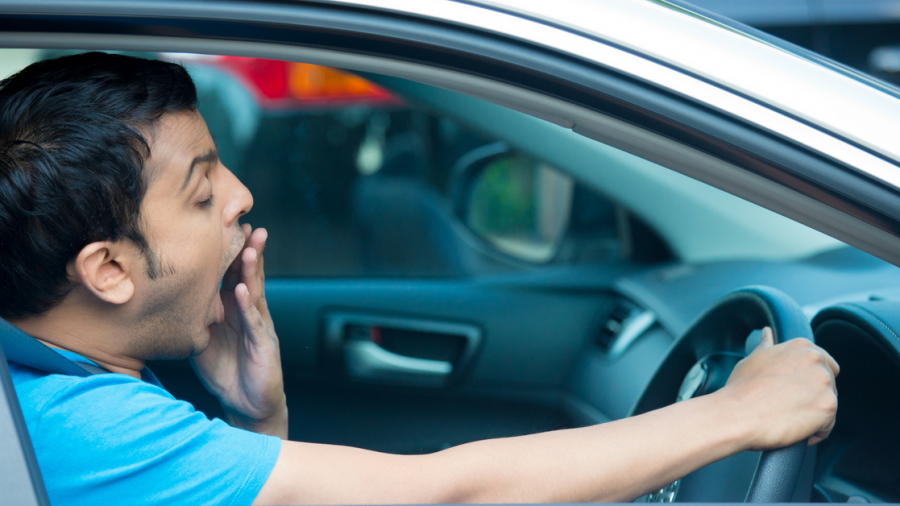Many people drive when tired and one in five Australians have fallen asleep at the wheel. Fatigue is definitely involved in 20% of fatal crashes but could be a factor in a lot more. Sleepy drivers find it harder to keep within the lines, react more slowly and are less able to handle hazards.
But how tired is too tired to drive? And what can we do to wake ourselves up?
Sleep deprivation
Surprising research in 2015 found being awake for 17 hours straight impairs driving as much as a blood alcohol content of .05.
But even people who don’t stay awake that long can get dangerously tired for other reasons. Unfortunately, sleep deprivation creates arousal in the body known as “fight or flight”. This releases the stress hormone, cortisol.
If people are continually influenced by stress hormones, it could even explain the high incidence of road rage.
Meanwhile, many people are suffering what is dubbed “social jetlag”. This means their sleep time on work nights is more than an hour out of sync with their sleep at other times. If you are socially jetlagged, you tend to go to bed late, wake up tired and go to work late or when sick. Of course, you may also be driving.
Natural vibrations
Yet even well rested and healthy drivers get sleepy. Did you know after 15 minutes of getting into your car, you have already started to feel drowsy? Researchers found within half an hour, you are less able to concentrate and stay alert. After an hour, your drowsiness is at its peak.
This is all because of the steady, low frequency vibrations of the vehicle. Even well rested drivers can’t help but respond to this lulling frequency. However, vibrations at some frequencies could be used to help keep people awake. Researchers suggest building these kinds of frequencies into, for example, car seat design.
Mind wandering
When tired, it is more likely your mind will start wandering. People don’t realise when their minds are wandering and this is part of the problem. In a simulation, participants were more likely to mind wander on the drive home after work – but they only knew it was happening 65% of the time.
When challenged, a group of our friends declared their minds “never wandered” while driving. This seems to confirm we are just not aware of it.
Truck drivers
Most at risk are truck drivers, who are 15 times more likely to die of fatigue than other workers.
Australian Trucking Association and Teletrac Navman recently gave an award to designers of a smart steering wheel with ECG monitors. The wheel can take heart rate readings and tells drivers through a Navman when and where they ought to stop for a rest.
At $100 per truck per month, it sounds expensive. This is because it does little to change the highly time-driven culture of truck driving.
Technological answer
There seems to be a technological answer to every problem. But the answer to fatigue goes well beyond technology and may even be caused by it. Who has not spent the last hour before bed on their computer screens?
The pressure to be busy never really lets up. We are doing all kinds of regular activities while sleepy – shopping, eating, even going to the gym. So it’s no surprise we’re driving while tired too.
The difference is that driving while sleepy can kill you – or someone else.


your opinion matters: